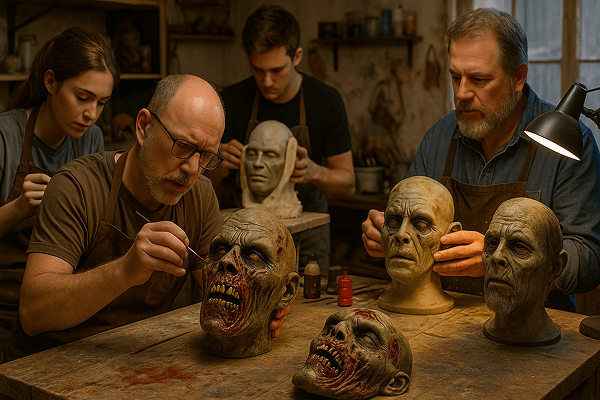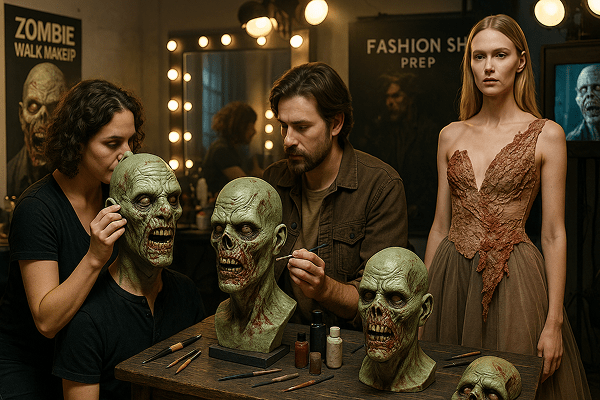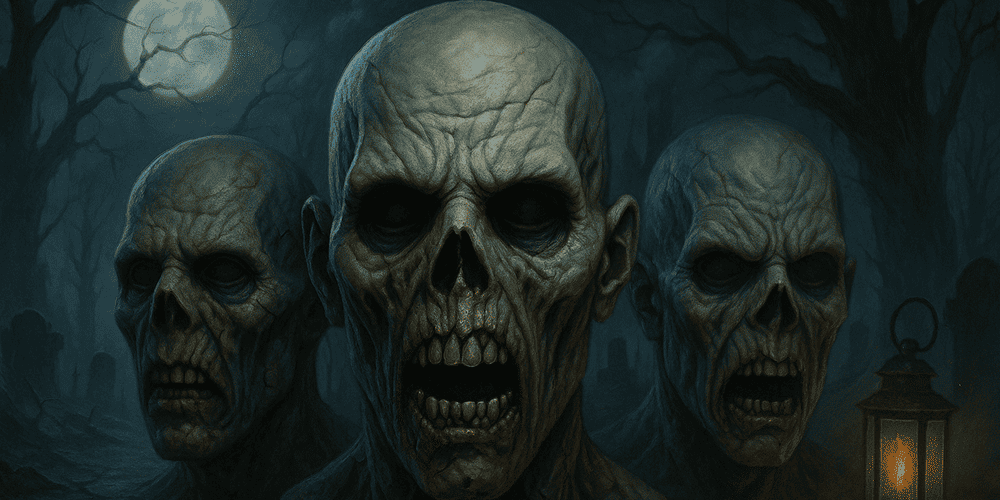Halloween Zombie Masks are among the most recognizable and chilling icons of modern Halloween celebrations. Designed to evoke the terrifying image of the undead, these masks typically feature rotting flesh, exposed bone, wounds, sunken eyes, and grotesque, lifeless expressions. Their hyper-realistic textures, gory details, and often unsettling color palettes — ranging from sickly greens to mottled grays and reds — make them a favorite for both horror enthusiasts and casual trick-or-treaters. Halloween Zombie Masks are especially popular in North America and Europe, where Halloween has become a major cultural festival since the late 19th and early 20th centuries.
Historical Origins of Halloween Zombie Masks
The concept of the zombie has deep roots in folklore and popular culture. The word “zombie” likely derives from West African languages such as Kimbundu (“nzambi” meaning spirit of a dead person) and Haitian Creole, where it entered through Haitian Vodou beliefs about the reanimation of corpses. In Western culture, the zombie myth was popularized by films such as “White Zombie” (1932) and later, George A. Romero’s “Night of the Living Dead” (1968), which defined the modern zombie as a flesh-eating revenant.
The use of zombie imagery in Halloween masks began in earnest in the 1970s and 1980s, as horror cinema exploded in popularity. Mask makers seized on the shocking visuals of decaying flesh, wounds, and vacant stares, creating latex and rubber masks that allowed anyone to become the undead for a night. The evolution of special effects, makeup, and mass production techniques greatly expanded the range and realism of these masks.
Cultural Significance and Symbolism of Halloween Zombie Masks
Halloween Zombie Masks are loaded with cultural symbolism. In their native context, they encapsulate society’s fascination with death, decay, and the collapse of order. Wearing a zombie mask on Halloween allows participants to confront — and mock — the fear of mortality and the unknown in a playful, communal setting.
Spiritually, zombies represent the breakdown of boundaries between life and death, self and other. They are the ultimate liminal figures, simultaneously human and monster, victim and threat. Myths and legends about the undead abound in many cultures, often serving as cautionary tales about hubris, contagion, or the dangers of losing one’s soul or identity. Socially, zombie masks have been used for satire, protest, and even social commentary, lampooning everything from consumerism to political decay.
Zombie masks are also part of a broader tradition of Monster Masks, which includes vampires, werewolves, and mummies — all archetypes of the monstrous “other” in Western culture.
Materials and Crafting Techniques of Halloween Zombie Masks
Traditional Halloween Zombie Masks were made from papier-mâché, cloth, or simple rubber, painted with gory details. Modern masks are most commonly crafted from latex, silicone, vinyl, or high-density foam for enhanced realism, comfort, and durability. The typical process involves:
- Sculpting an original zombie face in clay or digitally
- Creating a mold from the sculpture
- Casting the mask in latex or silicone
- Trimming, painting, and airbrushing to replicate wounds, rot, and decay
- Adding hair, scars, open wounds, and other 3D effects
Some high-end masks integrate animatronics, embedded LEDs for glowing eyes, or movable jaws for added impact. Regional differences exist: American masks tend to emphasize gore and shock, while Japanese and European masks may incorporate folklore elements or stylized features. Color symbolism is crucial — greenish and gray tones for decay, red for blood, black for shadow and rot, and yellow or white for bone and teeth.

Functions and Uses of Halloween Zombie Masks
Halloween Zombie Masks serve several functions:
- Ritual and Ceremonial Use: Echo ancient traditions of warding off evil and confronting death during the liminal season of Halloween.
- Theatrical and Performance Use: Central to haunted houses, horror theater, and Halloween parades.
- Festival and Holiday Use: Worn by trick-or-treaters, partygoers, and parade participants for scare and entertainment value.
- Contemporary Use: Popular in zombie walks, horror conventions, film festivals, cosplay events, and social media content.
Over time, the use of zombie masks has shifted from ritual and theatrical roots to mass entertainment, self-expression, and even political protest (e.g., zombie-themed marches).
Regional Variations of Halloween Zombie Masks
Although most closely associated with North American and European Halloween, zombie masks have global variations:
- United States and UK: Focus on highly detailed, gory, and realistic effects, often inspired by movie and TV zombies.
- Japan: Incorporate elements from yokai folklore and anime, with more stylized or surreal features.
- Latin America: Sometimes blend zombie and calavera (skull) motifs, especially during Día de los Muertos.
- Eastern Europe: May reference local revenant legends, such as the Slavic “upir” or “strigoi.”
Each region adds its own artistic touch, materials, and mythological references, making the world of Halloween Zombie Masks diverse and ever-evolving.
Famous Examples and Notable Collections of Halloween Zombie Masks
Some of the most famous Halloween Zombie Masks are inspired by cinema and television:
- “Night of the Living Dead” and “The Walking Dead”: Iconic zombie looks replicated in masks for fans and collectors.
- Don Post Studios: Pioneered hyper-realistic latex zombie masks in the 1970s and 1980s.
- Hollywood Museum and Museum of Pop Culture (MoPOP), Seattle: Host collections of movie-used zombie masks and props.
- Private collections: Enthusiasts and horror memorabilia collectors showcase rare, artist-signed, or screen-used zombie masks.
Digital galleries and expert commentary on notable zombie masks are available at toddmasks.com.
Influence of Halloween Zombie Masks on Art and Culture
Halloween Zombie Masks have had a significant influence on art, fashion, cinema, and music. Their grotesque forms have inspired painters, sculptors, and makeup artists worldwide. In literature and film, zombies symbolize social collapse, contagion, and the fear of the unknown.

Fashion designers have referenced zombie aesthetics in runway shows and Halloween collections. In music, zombie masks are used by performers to create dramatic stage personas. The ongoing popularity of zombie walks, horror conventions, and themed events ensures that these masks remain central to popular and subcultural expressions of fear, humor, and creativity.
Contemporary Status and Preservation of the Zombie Mask Tradition
Today, the tradition of making and wearing Halloween Zombie Masks is thriving. Master artisans and independent studios use innovative materials and techniques, including 3D printing, eco-friendly latex, and digital sculpting. Online tutorials, workshops, and maker communities help new generations learn mask-making.
Annual events like zombie walks, Halloween parades, and mask contests keep the tradition alive and evolving. Museums, cultural institutions, and online resources like toddmasks.com play a vital role in preserving the history, artistry, and social significance of zombie masks.
Collecting and Acquiring Halloween Zombie Masks
The market for Halloween Zombie Masks ranges from affordable mass-produced masks to high-end, artist-signed or screen-used collectibles. Authentic masks can be found at specialty costume shops, conventions, auctions, and reputable online platforms such as toddmasks.com. Factors influencing value include:
- Material and craftsmanship
- Artist reputation
- Association with movies, TV, or famous events
- Authenticity and provenance
Collectors are encouraged to look for original designs, high-quality materials, and clear documentation. Supporting living artisans and ethical acquisition is important, as is avoiding counterfeits or unlicensed reproductions.
